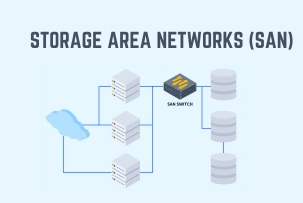Comprehensive guide on what's new in Windows Server 2022?
14:49, 07.06.2023
Windows Server is one of the most common operating systems used on servers. In contrast to its counterparts, it’s one of the few paid server OSs, which is despite this commonly used due to the features it provides. Although Linux distributions are generally considered more flexible and reliable, Windows has a bunch of features that make it extremely suitable for certain projects, In particular when it comes to corporate networking.
Today we are going to have a look at the freshest features introduced in Windows Server 2022, now available as preinstalled OS also on HostZealot servers, that were not present in older versions, Windows Server 2019 in particular.
With new versions of the system being released, it’s essential to keep track of the new features added to better know, which version will be the best solution for your project. Let’s dive in!
Windows Server 2019 vs. 2022
- Key Features Windows Server 2019 Windows Server 2022
- Automatic Windows Admin Center Updates - +
- Customizable Columns for VM Information - +
- Detachable Events Overview Screen Configurable Built-in
- Configurable Destination Virtual Switch - +
- Event Workspace to track data - +
- Automated Extension Lifecycle Management - +
- Enhanced Security
- Hardware-enforced Stack Protection - +
- TLS Supports 1.2 1.3 Is Enabled by Default
- Secured-core server - +
- Hypervisor-based code integrity - +
- Hybrid Cloud Capabilities
- Azure Arc Supported 1.3 Is Enabled by Default
- Storage Migration Service Supported Deployment and Management Is Simplified
- Improved Platform Flexibility
- Uncompressed Image Size Approx. 3.7 GB Approx. 2.7 GB
- Virtualized Time Zone Mirrors Host Timezone Configurable Within Container
- Group Managed Service Accounts (gMSA) Requires Domain Joining + -
- DSR Routing - +
- Better Kubernetes Experience
- HostProcess containers - +
- Multiple Subnets Per Windows Worker Node - +
- Upgraded Hyper V Manager
- Action Bar - +
- New Partitioning Tool - +
- Live Storage Migration - +
- Running Workloads Between Server - +
- Affinity and Anti-Affinity Rules - +
- VM Clones - +
Windows Server 2022 VS. Windows Server 2019
Storage
Windows Server 2022 introduces a series of innovations that have a positive effect on the way the OS works with the storage of the server and make the management of the data smoother.
Storage Migration
Windows Server 2022 introduces an updated version of the storage migration service introduced in Windows Server 2019. The service greatly facilitates different scenarios of storage migration.
Adjustable storage repair speed
The adjustable storage repair speed feature, introduced in Windows Server 2022 provides administrators with the ability to configure the rate at which these repair operations are executed. By adjusting the speed, administrators can balance the resources consumed by repair tasks and the impact on the system's performance or availability.
Faster repair and resynchronization
Events like node reboots and disk failures create the need for repair and resynchronization of the storage. In Windows 2022 this operation has been optimized, so they now take less time.
SMB compression
Files compression is one of the operations that are performed with the storage pretty often. On Windows Server 2022, you no longer need to use third-party software for this task, since it now can be performed by a special tool built-in into the OS.
Security
Security has always been a major concern for developers of any kind of software, especially when it comes to such things as server operating systems, containing your whole web business.
Windows Server 2019 already offered us to the most advanced and sophisticated measures to protect your website, among which Windows Defender Advanced Threat Protection feature, machine learning-powered and able to smartly detect malicious activities constantly and automatically learning from former experiences.
In addition to features that were already present in previous versions, Windows Server 2022 introduces three main innovations:
- Hardware root-of-trust
- Firmware protection
- Virtual environment security
Hardware root-of-trust
Hardware root-of-trust is a security approach establishing a foundation of trust in the hardware components of a system. It is designed to ensure that the system's hardware, such as the central processing unit (CPU), firmware, and other critical components, are secure and have not been tampered with.
The hardware root-of-trust establishes a secure starting point or "root" upon which the system's security can be built. It typically relies on hardware-based security features and mechanisms that are integrated into the system at a fundamental level. These features may include secure boot processes, secure storage of cryptographic keys, secure enclaves, and other hardware-based security capabilities.
In the context of Windows Server 2022, the implementation of hardware root-of-trust ensures that the operating system and firmware are protected against tampering, making it more challenging for security breaches to occur. It enhances the overall security posture of the system by establishing a foundation of trust in the underlying hardware components.
Firmware protection
Firmware, which is the software embedded in hardware devices, plays a crucial role in the functioning of a computer system. The secure core processors introduced by Microsoft will significantly increase the security of the firmware
The secure-core server processors utilize a technology called DRTM (Dynamic Root of Trust for Measurement). DRTM makes sure that the security of the firmware is not compromised during the boot processes.
Furthermore, the CPUs (Central Processing Units) also employ DMA (Direct Memory Access) protection technology. DMA allows devices to directly access the system's memory without involving the CPU. However, this direct access can be exploited by malicious drivers to gain unauthorized access to sensitive information or manipulate the system's memory. To make this risk lower, CPUs implement DMA protection technology, which isolates and restricts driver access to memory, preventing unauthorized operations and enhancing system security.
Virtual environment security
VBS leverages hardware virtualization features to create a secure region of memory that is isolated from the normal operating system (OS). By isolating this secure memory region, VBS provides an additional layer of protection for users' data. It helps safeguard against various vulnerabilities and threats, particularly those used in cryptocurrency mining attacks. This means that even if the OS or applications running on the server are compromised, the secure memory region remains protected, reducing the risk of data breaches or unauthorized access to sensitive information.
By incorporating VBS and other advanced security features, Windows Server 2022 offers improved security compared to its older counterparts, Windows Server 2019 and 2016. These enhancements contribute to a more robust and resilient security posture, helping to mitigate potential risks and vulnerabilities associated with modern cyber threats.
Networking
Windows Server 2022 uses the most recent version of TLS (Transport Layer Security). This makes the connection capability of your server faster and more secure.
Besides that Windows Server 2022 is equipped with an updated TCP (Transmission Control Protocol) as well as TCP HyStart++ and RACK technology, all contributing to the network speed of a server.
Cloud management
With cloud technologies becoming increasingly more present, Windows Server 2022 adds new features that will make cloud management easier and more efficient. These include such solution as Hybrid Clouds, an environment that combines both on-premises infrastructure and cloud services. It allows organizations to leverage the benefits of both private and public clouds, enabling greater flexibility, scalability, and cost-effectiveness.
With the introduction of Hybrid Cloud technology in Windows Server 2022, Microsoft has provided features and capabilities that simplify the deployment and management of hybrid cloud environments. This includes enabling on-demand app compatibility, which means that applications can seamlessly run and be compatible across both on-premises and cloud environments. This enhances the flexibility and ease of migrating or running applications in hybrid cloud setups.
By adopting Hybrid Cloud technology, businesses can leverage the advantages of cloud computing while still maintaining control over their sensitive data and applications hosted on-premises. It offers a more flexible and adaptable approach to IT infrastructure management, allowing organizations to optimize resource utilization and scale their applications as needed.
Features removed in Windows Server 2022
Some obsolete features that were present in Windows Server 2019 have been now removed from the latest edition of the server OS:
- SAC (Semi-annual Channel): Instead of a Semi-annual Channel Microsoft is going to add a long-term channel.
- iSNS (Internet Storage Name Service) Server: iSNS a network-based service that facilitates the discovery, management, and configuration of storage devices in a storage area network (SAN) environment was also discontinued in Windows Server 2022 as a legacy feature that is no longer actively developed.
- Guarded Fabric and Shielded Virtual Machines (VMs) are security features introduced in Windows Server 2016 and continued in subsequent versions, including Windows Server 2022. However, from now on the features will no longer be further developed.
- Windows Deployment Services (WDS) is a server role in Windows Server that enables the deployment of Windows operating systems to client computers over a network. It provides a centralized and automated method for deploying Windows images, reducing the time and effort required to install and configure multiple machines. In the latest edition of the OS, WDS was partially removed.
Why upgrade to Windows Server 2022?
Summing up the information above, let’s see, why it’s eventually worth upgrading to Windows Server 2022:
- Improved Performance: Windows Server 2022 includes performance improvements and optimizations over its predecessor. These enhancements can result in better overall system performance, faster application response times, and improved scalability, allowing you to handle increasing workloads more efficiently.
- Enhanced Security: The new security features of Windows Server 2022 are designed to meet the newest security challenges while coping more efficiently with older issues.
- New Features and Capabilities: Besides security, Windows Server introduces a long list of features that cover a vast number of areas such as hybrid cloud integration, containerization, virtualization, storage management, networking, and remote desktop services. By upgrading, you can benefit from the latest technological advancements.
- Extended Support and Lifecycle: Upgrading to Windows Server 2022 ensures that you remain within the supported lifecycle of the operating system. This means you will continue to receive security updates, patches, and bug fixes from Microsoft, ensuring the ongoing stability and reliability of your server environment. Staying on an older version, such as Windows Server 2019, may limit the availability of future updates and support.
- Compatibility and Integration: As technology evolves, new applications and services may be designed to take advantage of the capabilities offered by the latest operating systems. By upgrading to Windows Server 2022, you ensure compatibility with newer software and technologies, allowing you to benefit from their features and advancements.


